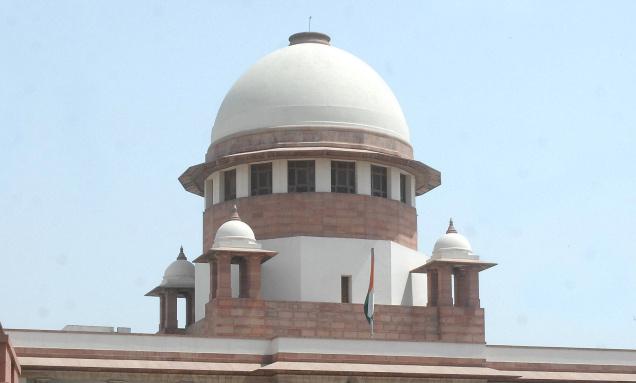BY RITWICK DUTTA – PUBLISHED IN THE HINDU
The Environment Ministry has systematically undermined the National Green Tribunal, giving expert committees a free hand to grant forest clearances to private projects
The Ministry of Environment and Forests (MoEF) has adopted a confrontationist approach with the National Green Tribunal (NGT). In its recent affidavit before the Supreme Court of India, the ministry stated that the tribunal has “exceeded its brief” and caused it “embarrassment” in Parliament. The affidavit was withdrawn and time sought to file a proper affidavit. The Supreme Court even threatened to stay the operation of the tribunal in view of the hostile approach of the MoEF towards the green body.
It is therefore necessary to trace the reasons for this “conflict” and “embarrassment” and the implications of staying the operation of the tribunal.
Specialised body
The NGT is a Statutory Tribunal and was created by Parliament as a specialised judicial and technical body to adjudicate on environmental disputes and issues. The enactment of the NGT Act, 2010 was itself an outcome of a long process and struggle. The Supreme Court in a number of cases highlighted the difficulty faced by judges in adjudicating on complex environmental cases and laid emphasis on the need to set up a specialised environmental court. Though the credit for enacting the NGT Act, 2010 goes to the then Environment Minister Jairam Ramesh, it became functional only because of repeated directions of the Supreme Court while hearing the Special Leave Petition titled Union of India versus Vimal Bhai (SLP No 12065 of 2009). The recent developments and the hostile approach of the MoEF towards the NGT seems to suggest that the aim of Mr. Ramesh’s successor (Jayanthi Natrajan) is to dismantle the tribunal.
Track record
Despite all the hurdles including financial and administrative bottlenecks, the NGT has emerged as a new hope for the environmental movement in the country. The NGT Act is no less important than the Right to Information Act, 2005, the Right to Food Bill and the National Rural Employment Guarantee Act, 2005. Environmental degradation affects livelihoods, health and access to food. Environmental struggles most often aim at ensuring that information about proposed projects (Environment Impact Assessment reports), air and water quality data is shared with the people. Over the last two years, the NGT has delivered 185 judgments on various environmental issues. The MoEF together with the Central Ground Water Authority, the Central Pollution Control Board and the various State governments have been forced to wake up from years of slumber and total inactivity. One of the most significant powers of the NGT is the capacity to do “merit review” as opposed to only “judicial review.” Under the writ jurisdiction of the High Court or Supreme Court, the courts are essentially concerned with the “decision making process” and not the “merits” of the decision. As a merit court, the NGT becomes the primary decision maker and therefore can undertake an in-depth scrutiny into not just the law but also the technical basis of a particular decision.
A new jurisprudence on the environment is steadily emerging in the country and is an example for the rest of the world. Today, nearly 50-60 Appeals and Applications are heard each working day before the various benches of the NGT. At a time when Environment Impact Assessments reports are a blind “copy and paste,” job where public hearings are a “mockery” and non-compliance with environmental rules and regulations are the order of the day, the NGT serves to restore faith in the “Rule of law.”
CAG report
Why is the MoEF not keen to see the NGT functioning? The answer is quite simple. The conduct of the ministry as well as the various statutory bodies on the environment has never been called into question in a systematic manner and its decisions have rarely been subject to any “merit review.” This has given a free hand to the various expert committees, boards and the officials as well as the Minister to arbitrarily grant approval to projects disregarding the environmental and social impact of projects and most often in violation of laws and rules. The recent report of the Comptroller and Auditor General of India (CAG) clearly proves the casual manner in which forest clearance issues have been dealt with by the MoEF as well as the State governments mostly to favour private companies. History tells us that the MoEF’s designs have largely succeeded. Post the Bhopal disaster, the National Environment Tribunal Act was passed by Parliament in 1995 to fix liability on a polluter. It never became operational. The National Environmental Appellate Authority set up through an Act of Parliament in 1997 was made defunct by the MoEF and led the Delhi High Court to conclude that the intention of Parliament to set up an effective grievances redressal forum has been defeated.
The recent affidavit is a wake-up call to those trying to protect the environment, the rights of communities as well as ensuring greater accountability in the government’s functioning. If the MoEF succeeds in its design, it would mean its third success in stalling a parliamentary legislation meant to keep a watch on its activities and decisions and protecting the rights of communities.
(Ritwick Dutta is an environmental lawyer and managing trustee of Legal Initiative for Forest and Environment.)


